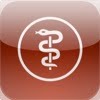Running all the way from your shoulder to your little finger your ulnar nerve manages the muscles that allow you to make fine movements with your fingers. The ulnar nerve also controls some of the muscles of your forearm that allow you to grip things tightly. The ulnar nerve is not protected by muscle or bone throughout its course unlike most of your other nerves. Being near the surface of your skin means that ulnar nerve injuries aren’t uncommon and the ulnar nerve is what creates the shock-like sensation when you hit the funny bone in your elbow.
If you damage your ulnar nerve you may lose sensation and have muscle weakness in your hand. This condition is known as ulnar nerve palsy or ulnar neuropathy and it can affect your ability to make fine movements and perform many routine tasks. Ulnar nerve palsy can cause muscle wasting, or atrophy, that makes the hand look like a claw in severe cases. When this happens surgery is sometimes necessary to correct the condition.
Probably the most common site of pain in an ulnar neuropathy is the elbow area, while many people complain of sensory changes in the fourth and fifth digits. Less commonly, an individual actually notices that the unusual sensations are mainly in the medial side of the ring finger (fourth digit). In other cases the third digit is also involved, especially on the ulnar (medial) side. The resulting sensations can be a feeling of numbness or a tingling, and pain rarely occurs in the hand. Pain complaints tend to be more common in the arm, up to and including the elbow area.
Ulnar nerve compression at the elbow is called "cubital tunnel syndrome" as the most common place for compression of the nerve is behind the inside part of the elbow. Numbness and tingling in the hand and fingers are common symptoms of cubital tunnel syndrome. Symptoms can be managed with conservative treatments like changes in activities and bracing in most cases. Your doctor may recommend surgery if conservative methods do not improve your symptoms, or if the nerve compression is causing muscle weakness or damage in your hand. It may be harder to complete tasks that were once easy since ulnar nerve palsy can make it difficult to work with your hands.
To confirm a diagnosis of ulnar neuropathy a physical examination is usually all that is needed. Your doctor may order an electromyogram or nerve conduction studies if the symptoms are severe and require more aggressive treatment First your doctor will ask you about your symptoms and examine you. If your symptoms began after an injury to your hand make sure to tell your doctor as this can help him determine potential causes of your condition more easily. Your health care practitioner will want to know what makes your symptoms worse or better, how the injury occurred, and how long symptoms have been present.
Your doctor will assess the condition of your hand and evaluate how well you can move your fingers during the exam and in addition to a physical examination, testing can include X-rays, nerve conduction tests, imaging tests, such as a CT scan or MRI and blood tests. These examinations and diagnostic tests will measure nerve function in the ulnar nerve and help detect swelling. This will help your doctor to localize the area of the nerve that is not functioning properly, while a nerve conduction study can help determine the severity of the dysfunction.
Similar treatments exist for cubital tunnel syndrome and ulnar tunnel syndrome. To relieve any inflammation that might be compressing the nerve is the first aim and this involves a combination of supportive splinting, rest, and proper mechanics. Ibuprofen or another pain reliever may also be prescribed. Steroid injections are generally not used because there is a risk of damage to the nerve even though steroids such as cortisone are very effective anti-inflammatory medicines. Doctors sometimes prescribe bracing or splinting, a padded brace or split to wear at night to keep your elbow in a straight position. Performing nerve gliding exercises may help some patients, many doctors think. These are exercises to help the ulnar nerve slide through the cubital tunnel at the elbow and the Guyon's canal at the wrist. In some cases these workouts can improve symptoms as they may also help prevent stiffness in the arm and wrist.
Your doctor may recommend a surgical procedure that involves tendon transfer if he determines that the nerve is not going to restore its normal function. During a tendon transfer surgery, A functioning tendon is moved from its original bone attachment to a new one during a tendon transfer surgery and this can help to allow you to perform routine activities once again. Nerves heal slowly but the results of surgery are generally good, though full restoration of wrist and hand function can take months. You may still have a loss of sensation and movement in your hands even after surgery.
Physical Medicine & Rehabilitation
Medicine. Matt Ota is a Board Certified Physician Assistant with
extensive knowledge of musculoskeletal disorders and injuries.
(located at OFMC Plaza)
2135 SW 19the Avenue Road
Wellness Direct: 352-368-1340
OFMC Main: 352-237-4133
Fax: 352-873-4581
E-mail: info@ocalafmc.com






